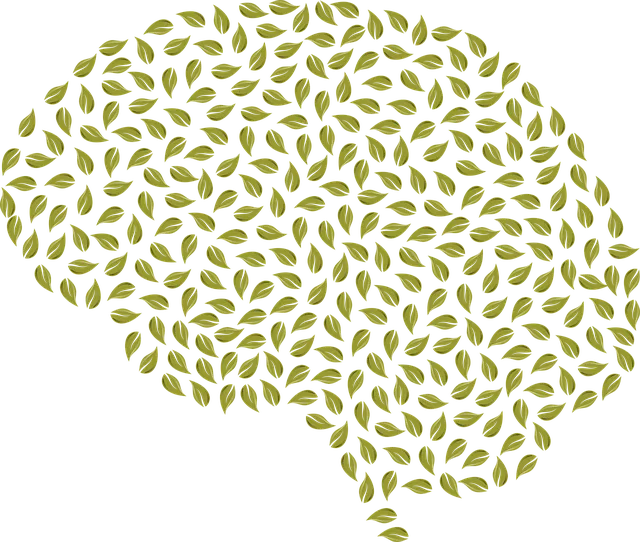Analyzing the Lone Tree Kaiser Permanente mental health appointment number is a powerful strategy for understanding community mental wellness trends. By tracking appointments over time, healthcare professionals can identify fluctuations correlating with community stress or public awareness. This data enables them to tailor risk management plans based on demographics and disorder types, fostering better emotional regulation. Kaiser Permanente's extensive network and data-driven approach facilitate accessible mental health services and early condition detection. Data analysis contributes to strategic decisions, shaping Mental Health Education Programs and Public Awareness Campaigns. Examining appointment numbers helps measure initiative success, target specific demographics, and improve mental healthcare allocation, ultimately enhancing community well-being.
Mental health data analysis is a powerful tool for understanding and improving patient care. In this comprehensive guide, we delve into the intricacies of analyzing mental health trends using real-world examples from organizations like Kaiser Permanente. By examining the Lone Tree Kaiser Permanente mental health appointment number, we uncover insights that can inform strategies to enhance patient outcomes. From decoding data to interpreting findings, this article offers a detailed overview of how data analysis is revolutionizing mental health care.
- Understanding Mental Health Data: A Comprehensive Overview
- The Role of Kaiser Permanente in Mental Health Tracking
- Decoding the Lone Tree Mental Health Appointment Number
- Analyzing Trends: Insights from Mental Health Data
- Interpreting Findings to Improve Patient Care and Outcomes
Understanding Mental Health Data: A Comprehensive Overview

Understanding Mental Health Data is a crucial step in effectively addressing and improving individual and community mental wellness. The process begins with recognizing that mental health appointments at institutions like Lone Tree Kaiser Permanente involve diverse data points, from patient demographics to clinical assessments, treatment plans, and progress notes. This comprehensive data offers valuable insights into the trends, patterns, and unique challenges within the population served.
Analyzing this data requires a systematic approach. For instance, tracking the Lone Tree Kaiser Permanente mental health appointment number over time can reveal fluctuations in demand, which may correlate with community-wide stress factors or changes in public awareness of mental health issues. Moreover, examining patient demographics and the types of mental health disorders presented can help in tailoring risk management planning for mental health professionals, ensuring they are equipped to address the specific needs of their clientele, fostering better emotional regulation among patients.
The Role of Kaiser Permanente in Mental Health Tracking

Kaiser Permanente, a renowned healthcare organization, has been at the forefront of mental health tracking and research. With its extensive network of medical facilities, including the Lone Tree location, it plays a pivotal role in providing accessible mental health services to a diverse range of patients. The organization’s commitment to data-driven care is evident through its robust system for collecting and analyzing mental health information.
By encouraging regular mental health appointments, Kaiser Permanente facilitates the early detection of various conditions, from anxiety and depression to more complex issues. This proactive approach allows for timely interventions using evidence-based practices such as Social Skills Training, Conflict Resolution Techniques, and Emotional Intelligence programs. The organization’s data analysis contributes to a deeper understanding of mental health trends within its population, enabling them to adapt services and strategies accordingly.
Decoding the Lone Tree Mental Health Appointment Number

In recent years, understanding and analyzing mental health data has become a beacon guiding improvements in healthcare services, particularly within institutions like Lone Tree Kaiser Permanente. Decoding the lone tree mental health appointment number offers valuable insights into community needs and informs strategic decisions. This data reveals trends and patterns that can guide the design of effective Mental Health Education Programs, ensuring they are tailored to address pressing local issues. By scrutinizing appointment numbers, healthcare providers can assess the impact of initiatives like Public Awareness Campaigns Development, allowing for continuous improvement in mental health policy analysis and advocacy.
Furthermore, a deep dive into these statistics enables a more nuanced understanding of mental health challenges within specific demographics. This knowledge is pivotal for developing targeted interventions and fostering an environment where individuals feel empowered to seek support. Through such analysis, Lone Tree Kaiser Permanente can ensure its resources are allocated efficiently, ultimately enhancing the accessibility and quality of mental healthcare services.
Analyzing Trends: Insights from Mental Health Data

Analyzing trends within mental health data offers a powerful window into understanding population-level insights and identifying areas for improvement. By examining the Lone Tree Kaiser Permanente mental health appointment numbers, healthcare providers can uncover significant patterns. For instance, a surge in appointments could point to heightened community stress or a growing awareness of mental wellness issues. Conversely, declining trends might suggest successful interventions or increased access to conflict resolution techniques.
This data-driven approach enables professionals to adapt services, allocate resources more effectively, and develop targeted strategies for mood management. By mining these insights, healthcare systems can ensure they are meeting the evolving needs of their communities, ultimately contributing to improved mental health outcomes and a stronger focus on promoting mental wellness.
Interpreting Findings to Improve Patient Care and Outcomes

When analyzing mental health data from Lone Tree Kaiser Permanente mental health appointments, healthcare professionals can uncover valuable insights to enhance patient care and improve outcomes. Interpretive findings should focus on identifying patterns and trends within the data that reflect common challenges and successes in treating patients. By understanding these patterns, providers can tailor their approaches for individual needs, ensuring more effective interventions. For example, if the data reveals a high number of appointments related to anxiety disorders, it may indicate a need for expanded Mental Health Education Programs Design targeting stress management and coping mechanisms.
Moreover, these insights can drive the development and implementation of Trauma Support Services and Empathy Building Strategies. Recognizing specific issues prevalent in the patient population allows for the creation of targeted interventions that address root causes. This proactive approach not only improves current care but also fosters better long-term mental health outcomes for patients, ultimately enhancing their overall well-being.
Mental health data analysis plays a pivotal role in understanding trends and improving patient care. By examining initiatives like those undertaken by Kaiser Permanente, especially the insights gleaned from the Lone Tree Kaiser Permanente mental health appointment number, we can decode critical information. Through meticulous interpretation of these findings, healthcare providers can enhance their approach to treatment, ultimately leading to better outcomes for patients. This article has provided a comprehensive roadmap for navigating this process, underscoring the importance of data in revolutionizing mental health care.






